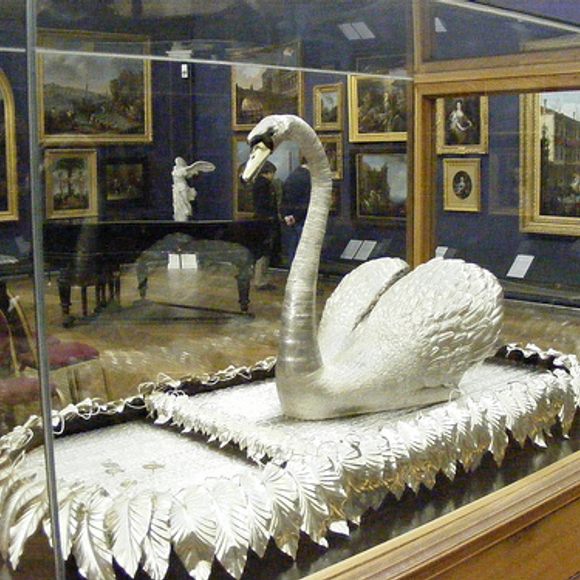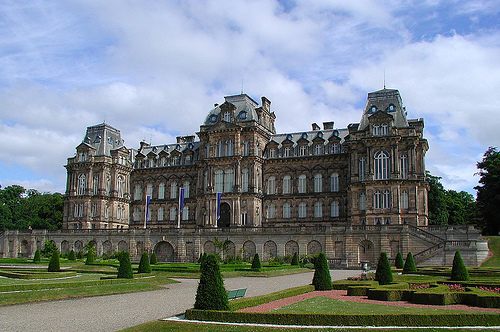The Silver Swan
A perfectly running 230-year-old silver automaton and music box.
Mark Twain saw the Silver Swan in Paris in 1867 and noted in his journal that it “had a living grace about his movement and a living intelligence in his eyes”. Over 140 years later, this elegant mechanical toy still runs daily, operating on the original clockworks.
When its three clockwork mechanisms are wound, the life-sized swan appears to swim along on a pond of spun glass rods, tiny silver fish leaping from the surface. She preens her feathers and looks around before lowering her head and snatching up a fish to eat, all set to soft bell-like music.
The Silver Swan started its known life as the crowd puller in James Cox’s famous museum of automata in London between 1774 and 1782, and is believed to have been built, at least in part, by the brilliant clockmaker and inventor John Joseph Merlin. Merlin was a mechanical polymath who worked with Cox on a famous “perpetual motion” clock as well as several other automata, clocks, and contraptions. Merlin’s Mechanical Museum was visited by a young Charles Babbage (designer of the Difference Engine) who was inspired by his machines (and later bought them for himself), however Merlin may be most famous for his design of the roller skate. The collections of the Bowes Museum are the result of years of intentional collecting by an intrepid Victorian couple, Josephine and John Bowes, who traveled extensively and purchased objects of beauty for their dream museum. French-born Josephine had an eye for automata, and was responsible for acquiring the machines now on display, including the swan which they purchased in 1872 following the Paris International Exhibition. The museum building was started in 1862 with the first stone set by Josephine, with the expectation that the final stone would be placed by her husband. Sadly, both died before the building was complete, but their building and their collection of 15,000 unusual items were opened nonetheless in 1892.
The famous Silver Swan is the highlight of the collection, and was restored with a complete disassembly for cleaning, repair, and study in 2008. Experts Matthew Read and Ken Robinson led the extensive restoration project which was documented weekly on the Bowes Museum web site as well as on the BBC.
The swans intricate mechanical innards were carefully reassembled after confirming that the old clock springs were still in good enough shape. Funky old repairs and modifications made in years past were removed, and the 122 silver leaves, dozens of delicate glass rods, and 113 silver rings that make up the swans neck were cleaned and replaced when needed. During the restoration of the music box components, they discovered that it had the ability to play two more tunes, and the swan now plays all eight of the original musical ditties in her repertoire.
It appears that at one time there may have been even more to the swan. During restoration there were indications that there may have originally been more fish, or possibly silver reeds surrounding them. The first description from 1773 mentions a total height 18 feet and includes a description of a rising sun as part of the performance, so there may well have been other elements that have since been lost.
The Silver Swan is now back on view and runs daily at 2pm, for a performance of about 40 astonishing seconds.
Know Before You Go
The Bowes Museum is 17 miles from Darlington rail station. Bus services run regularly to Barnard Castle from Darlington (Arriva 75 & 76 and 70), Bishop Auckland (Arriva 80 and Richmond (Arriva 79).Entry is Free, though a donation is requested. The Swan is constantly undergoing restoration work, so various aspects might not be in working order.








































Follow us on Twitter to get the latest on the world's hidden wonders.
Like us on Facebook to get the latest on the world's hidden wonders.
Follow us on Twitter Like us on Facebook